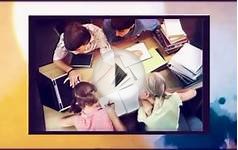
Information about Art Lessons for Autistic Students
Although art activities are typically complex and ideological, art classes or lessons for autistic children is often beneficial. Children with disabilities may have the capacity to relate to these kinds of abstract activities because they parallel the nature of their disabilities. Such activities also provide autistic children with opportunities to put their keen focusing ability to good use. Because art lessons come in a wide variety of formats, it's usually easy to find something that appeals to all ages and cognitive levels.
Art Lesson Benefits
- Improves the capacity for learning
- Stimulates and strengthens focusing skills and attention span
- Increases self-expression through art, words, gestures, and sign language
- Builds sensory integration skills
- Decreases self-stimulating behaviors
- Engages the visual/perceptive area of the brain
Types of Art
There are many types of art lessons for autistic students in which your child can successfully participate. Check with your local resource agency for advice on finding a good art therapist or art school that can teach your child with patience and respect. For an idea of the kind of art activities your child might enjoy, look at the list below.
- Finger Painting Lessons: This activity appeals to autistic children of all ages. Specific benefits include improvements in visual-spatial deficiencies, tactile sensory tolerance, and self-expression.
- Painting Lessons: It's amazing what springs forth from a hand that holds a paint brush. This type of art class improves manual dexterity and coordination, attention span, and self-expression. Extra advantages include increasing self-awareness and developing a sense of pride through accomplishments.
- Sponge Painting Lessons: When holding a paintbrush is out of the question, sometimes a sponge is perfectly acceptable. People of all ages usually delight in cutting shapes from sponges, dipping them in paint, and making a piece of art. This activity promotes social skills, tactile tolerance, and improves visual acuity.
- Clay Sculpture Lessons: For autistic children who often focus on one thing to the exclusion of all else, learning how to make things with clay provides them with a healthy outlet for their intense single-mindedness. The activity also improves muscle tone, large and small motor functions, and manual dexterity.
- Other Types of Art: A good art teacher or therapist remains unbound by format or media. Let your child have the opportunity to experience the full range of art lesson benefits by seeking out teachers who allow him to use whatever art media that appeals to him. Examples include fiber arts, mixed media, digital art, and freeform sculpture.






